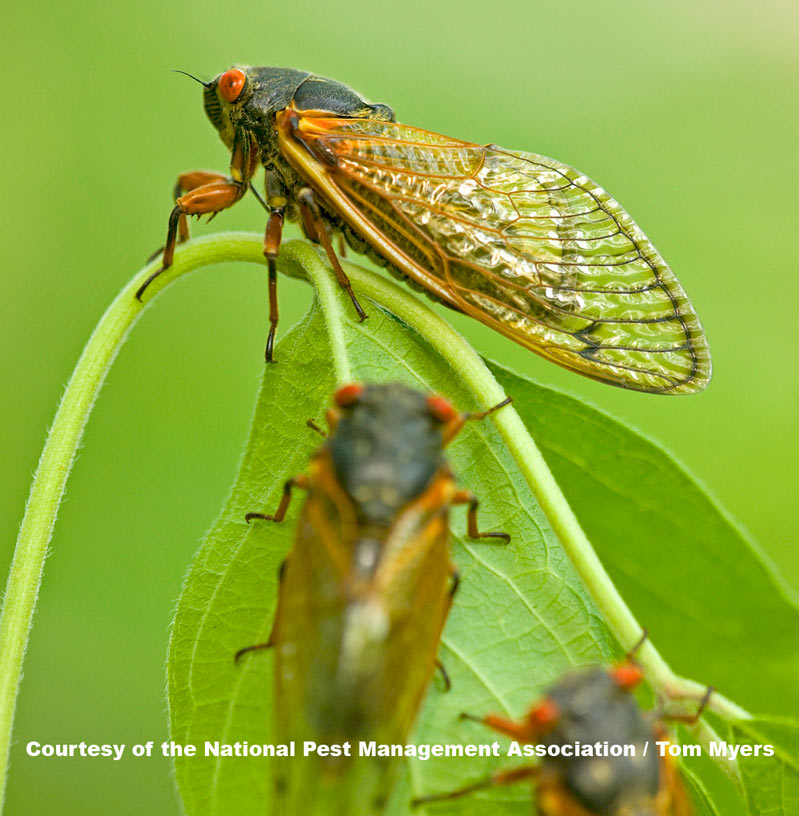Why Do Cicadas Sing?

What's black and red and heard all over? A cicada, of course.
The periodically appearing Magicicada, or 17-year locust, is due to rise up and break its silence along the East Coast of the United States this spring.
And as one of the world's loudest insects, cicadas are likely to make an entrance that will leave local ears ringing.
But why all the ruckus? After nearly two decades stuck underground, are these bugs making all that noise just for sheer joy? No: Cicadas, while mysterious, have clear-cut reasons for their unusual habits.
The chirping and clicking noises of the male cicada are actually a species-specific mating call that can be heard by females up to a mile (1.6 kilometers) away.
But with one estimate putting the number of cicadas at 1 billion per square mile, it's easy to understand why East Coasters might find this cicada serenade anything but romantic.
Male cicadas produce their calls by rapidly vibrating a white, drumlike plate, or tymbal, located on either side of their abdomens. A chorus of lovesick cicadas can reach volumes greater than 100 decibels, which is louder than a lawnmower at full bore.
Sign up for the Live Science daily newsletter now
Get the world’s most fascinating discoveries delivered straight to your inbox.
Luckily for anyone needing a good night's sleep, these bugs usually cease their racket by sundown. The cicada's group chorus also repels birds that hunt by day, so when these insects stop singing, there's a good chance the birds have gone to bed.
And if you're on the East Coast, then you should get some rest as well, because this bug symphony is sure to last for several ear-splitting weeks.
Follow LiveScience on Twitter @livescience. We're also on Facebook & Google+.

Elizabeth is a former Live Science associate editor and current director of audience development at the Chamber of Commerce. She graduated with a bachelor of arts degree from George Washington University. Elizabeth has traveled throughout the Americas, studying political systems and indigenous cultures and teaching English to students of all ages.









